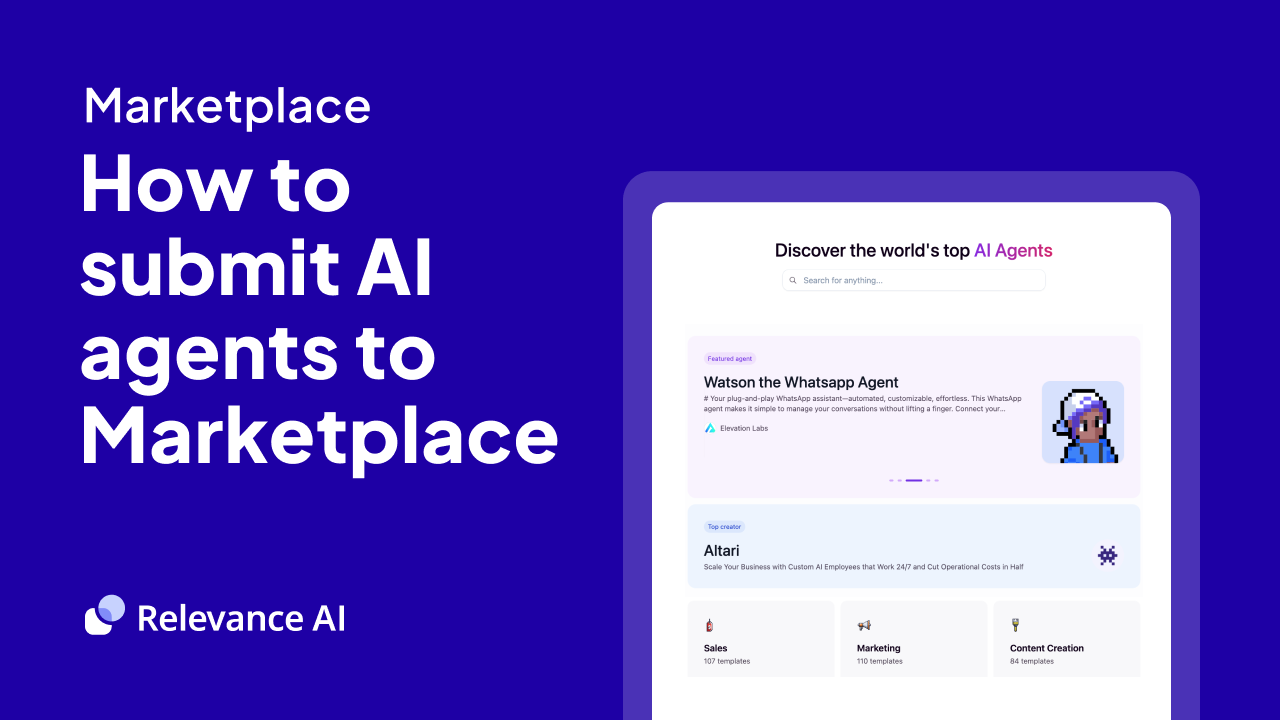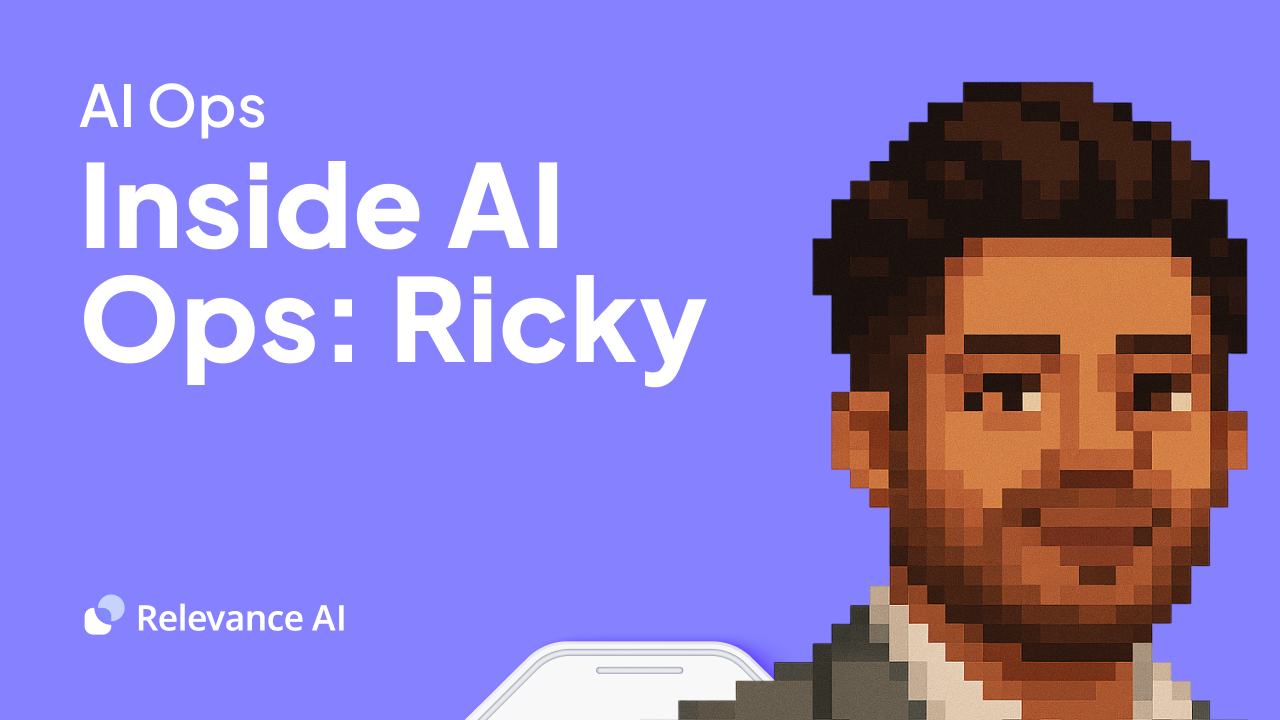Nimble
Understanding Nimble's Intelligent CRM Platform
Nimble represents a new category of intelligent CRM that combines relationship management with AI-powered automation. The platform moves beyond traditional contact databases to create a dynamic system that actively helps teams build and nurture valuable business relationships. By integrating with existing communication channels and workflows, Nimble serves as a central nervous system for customer interactions.

Benefits of AI Agents for Nimble
What would have been used before AI Agents?
Sales teams traditionally relied on manual data entry, spreadsheet management, and constant tab-switching between CRM systems and communication tools. The standard workflow involved sales reps spending hours updating contact information, logging activities, and trying to maintain accurate customer records. This created a massive productivity drain - studies show sales professionals spent up to 65% of their time on non-selling activities.
What are the benefits of AI Agents?
AI Agents transform how sales teams interact with Nimble CRM through three core mechanisms:
Automated Data Orchestration
The AI Agent acts as a digital teammate that automatically captures, updates, and enriches contact data across email, calendar, and social platforms. This eliminates the cognitive load of manual data entry while ensuring the CRM stays current with minimal human intervention.
Contextual Intelligence
Rather than just storing contact information, the AI Agent analyzes communication patterns, engagement history, and relationship signals to surface actionable insights. It identifies optimal times to reach out, flags at-risk accounts, and provides real-time coaching on next best actions - essentially giving sales reps an always-on strategic advisor.
Predictive Engagement
The AI Agent learns from successful sales patterns to recommend personalized outreach strategies. It can draft contextually relevant follow-ups, suggest talk tracks based on prospect personas, and automate routine touchpoints while maintaining a human feel. This multiplies a sales rep's capacity to nurture relationships at scale.
The network effects are particularly powerful - as more sales teams use AI Agents with Nimble, the system becomes increasingly intelligent at pattern matching and prescriptive guidance. This creates a flywheel where the technology gets better at helping close deals while requiring less manual effort.
For sales organizations, this translates to 3-4x more selling time, 50%+ faster deal cycles, and significantly higher win rates through better-informed, more consistent execution of sales processes.
Potential Use Cases of Nimble AI Agents
Processes
Nimble AI agents excel at managing complex, multi-step processes that typically consume significant human bandwidth. They can orchestrate customer onboarding sequences by automatically collecting documentation, validating information, and triggering necessary approvals. When integrated with existing systems, these digital teammates handle the heavy lifting of data migration projects, transforming what used to be weeks of manual work into automated workflows.
For sales operations, Nimble agents monitor deal progression, flag stalled opportunities, and maintain data hygiene across CRM systems. They can detect patterns in successful deals and automatically apply those insights to optimize pipeline management.
Tasks
The granular task execution capabilities of Nimble agents shine in several key areas:
- Data Analysis and Reporting: Automatically generating weekly performance metrics, identifying trends, and creating visualization-ready datasets
- Document Processing: Extracting key information from contracts, invoices, and legal documents while maintaining accuracy and compliance standards
- Email Management: Categorizing incoming messages, drafting responses based on historical communication patterns, and ensuring timely follow-ups
- Calendar Coordination: Managing complex scheduling scenarios across time zones while accounting for team preferences and availability patterns
- Knowledge Base Maintenance: Continuously updating internal wikis, documenting processes, and ensuring information remains current across all platforms
The real power emerges when these digital teammates handle sequences of interconnected tasks. For example, in recruiting workflows, Nimble agents can screen resumes, schedule initial interviews, send follow-up communications, and maintain candidate records - all while adapting to hiring manager preferences and company protocols.
Growth teams leverage Nimble agents to monitor user behavior patterns, trigger targeted engagement campaigns, and analyze response rates - creating a continuous feedback loop that drives product adoption and user retention.
The key differentiator is how these agents learn from each interaction, becoming more efficient at pattern recognition and decision-making over time. This compounds their value as they become increasingly attuned to organization-specific nuances and requirements.

Industry Use Cases
Nimble AI agents are transforming how teams operate across multiple sectors, bringing intelligence and adaptability to complex business challenges. The real power lies in how these digital teammates integrate seamlessly into existing processes while continuously learning from each interaction. From manufacturing floors to creative studios, Nimble's capabilities extend far beyond basic task automation - they're becoming integral parts of high-performing teams.
What makes Nimble particularly compelling is its ability to understand context and nuance in different professional environments. Unlike traditional software tools that follow rigid rules, Nimble agents adapt their approach based on industry-specific requirements and team dynamics. This flexibility allows organizations to deploy AI solutions that truly align with their unique operational needs and cultural preferences.
The following examples demonstrate how different sectors leverage Nimble's capabilities to create measurable impact and meaningful improvements in their daily operations. Each case represents a distinct application of AI technology, shaped by real-world challenges and opportunities specific to that industry.
Real Estate: Transforming Client Relationships with Nimble AI
Real estate professionals face a unique challenge - managing hundreds of relationships across buyers, sellers, agents, and service providers while staying on top of market dynamics. Nimble AI agents function as intelligent relationship managers that analyze patterns in client communications and property preferences at scale.
A real estate broker working with luxury properties in Miami can deploy Nimble AI to track subtle signals in their network. The AI identifies when past clients are posting about life changes on social media - like job relocations or growing families - that often trigger property searches. It automatically surfaces these insights while maintaining detailed context about each relationship's history.
Beyond reactive monitoring, Nimble AI proactively suggests personalized property recommendations based on analyzing years of transaction data and client preferences. For a client who previously purchased waterfront properties, it may flag new listings with ocean views before they hit the market. The AI builds rich profiles combining stated preferences with observed behaviors to predict future needs.
The network effects compound as Nimble AI learns from each interaction. When a broker connects a buyer to a mortgage broker or interior designer, the AI captures those service provider relationships and can make intelligent referrals for future clients with similar needs and preferences.
Most critically, Nimble AI handles the heavy lifting of maintaining relationships between transactions. It identifies optimal times to reach out based on key milestones, suggests relevant market updates to share, and ensures no valuable relationship goes cold. This allows real estate professionals to scale their personal touch across a much larger network.
The end result is a real estate practice that operates with the efficiency of a tech platform while maintaining the human elements that drive success in relationship-based businesses. Nimble AI amplifies rather than replaces the broker's expertise and intuition.
Marketing Agencies: Scaling Client Success with Nimble AI
Marketing agencies operate in a complex web of client relationships, campaign data, and creative deliverables. Nimble AI agents act as relationship intelligence hubs that decode patterns across client interactions, campaign performance, and market trends.
A digital marketing agency managing accounts for SaaS companies can leverage Nimble AI to spot early warning signs in client health. The AI analyzes communication patterns, response times, and sentiment shifts that often precede churn. When engagement drops or feedback turns negative, it flags these changes while providing historical context about the relationship.
The AI's pattern recognition capabilities extend to campaign optimization. By analyzing years of performance data across similar clients, it identifies which creative approaches and channel mixes tend to work best for specific customer segments. For a B2B software client targeting enterprise buyers, it may detect that thought leadership content consistently drives higher engagement than product-focused materials.
Network intelligence becomes particularly valuable for agency growth. When Nimble AI observes successful outcomes with certain client types or industries, it can identify similar prospects in the agency's network. The system builds detailed ideal customer profiles based on actual results rather than assumptions.
The real power emerges in relationship nurturing between active projects. Nimble AI monitors industry news, funding announcements, and leadership changes across the client portfolio. It suggests timely touchpoints and relevant content sharing opportunities that keep the agency top-of-mind. This systematic approach to relationship building creates a steady flow of repeat business and referrals.
Marketing agencies using Nimble AI effectively operate like growth partners rather than vendors. The AI augments account managers' expertise with data-driven insights while preserving the strategic thinking and creativity that clients value. The result is deeper client relationships that scale without sacrificing quality.

Considerations for Nimble AI Implementation
Implementing Nimble AI agents requires careful planning and strategic thinking around both technical infrastructure and organizational readiness. The key is finding the right balance between automation capabilities and human oversight.
Technical Considerations
API integration complexity often presents the first major hurdle. Teams need robust error handling and fallback mechanisms when Nimble agents interact with multiple systems. Data privacy and security protocols must be airtight, especially when agents process sensitive customer or business information.
Performance monitoring becomes critical at scale. Without proper observability tools and metrics, it's difficult to identify bottlenecks or understand why agents may produce unexpected outputs. Teams should implement comprehensive logging and monitoring from day one.
Operational Challenges
Change management proves just as crucial as technical implementation. Teams often underestimate the time needed to train employees on effectively working alongside AI agents. Clear guidelines around agent capabilities and limitations help set realistic expectations.
Cost management requires ongoing attention. While Nimble agents can reduce manual work, API calls and compute resources add up quickly. Teams should implement usage tracking and establish clear ROI metrics before scaling deployments.
Integration Strategy
Starting small with focused use cases allows teams to learn and iterate. Rather than attempting a full-scale rollout, identifying high-impact processes with clear success metrics provides a stronger foundation. This approach helps build internal expertise while demonstrating concrete value.
Documentation and knowledge sharing become essential as more teams begin working with Nimble agents. Creating internal playbooks and best practices helps standardize implementation approaches and avoid repeated mistakes.
Risk Mitigation
Regular audits of agent behavior and output help catch potential issues early. Teams should establish clear escalation paths for when agents encounter edge cases or produce unexpected results. Having human experts available for oversight and intervention remains crucial, especially in customer-facing scenarios.
The Future of AI-Powered Relationship Management
The integration of AI Agents with Nimble marks a fundamental shift in how organizations manage and grow their business relationships. Moving beyond simple automation, these digital teammates create compound benefits through their ability to learn, adapt, and surface insights that drive measurable business outcomes. As the technology continues to evolve, organizations that effectively leverage these capabilities will gain significant advantages in their ability to scale meaningful relationships while maintaining authentic human connections.
Success with Nimble AI Agents requires thoughtful implementation and a clear understanding of organizational goals. Teams that approach the technology as an amplifier of human capabilities, rather than a replacement, will be best positioned to realize its full potential. The future of relationship management lies in this balanced partnership between human expertise and AI-powered intelligence.











